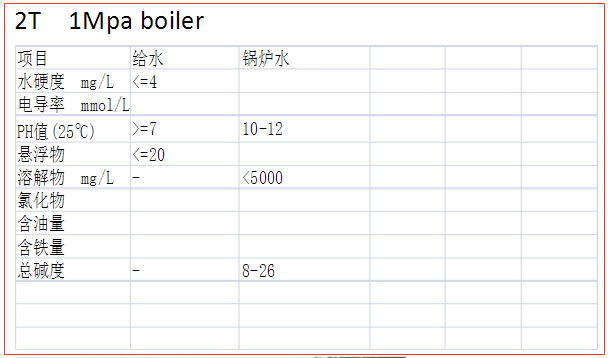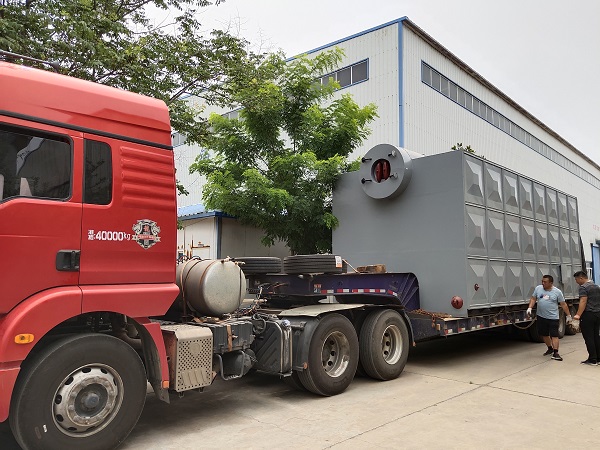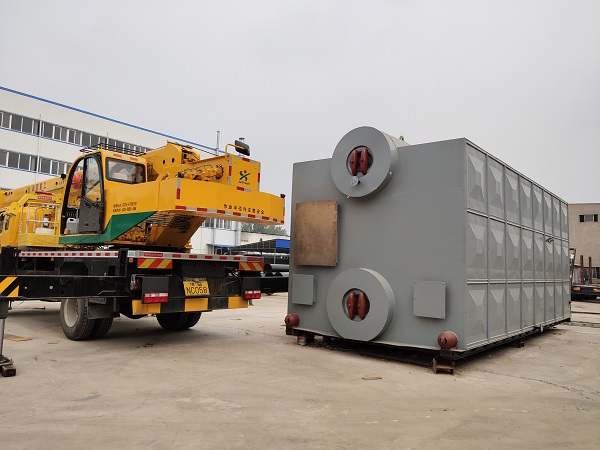Guide: Gas boilers are used to provide heat energy. It is literally known that gas boilers are used as fuel. Gas boilers can be used in industry and life.
Gas boilers are used to provide heat energy. It is literally known that gas boilers are used as fuel. Gas boilers can be used in industry and life. This article tells you the basic knowledge of gas boilers, including the basic operating procedures of gas boilers, maintenance methods of gas boilers and common sense of gas boiler installation. Basic knowledge of gas boiler 1. Components
1. The blower (the air inlet has a filter, and the motor draws air into the burner to change the size of the fire); 2. The feed water pump, presses the water from the water softener and enters the energy saver (economizer) to absorb the heat of the boiler exhaust to pre-heat the water Heat, and then enter the boiler body for heating; 3. Economizer (energy saver), located in the flue, before water enters the boiler body, passes through here to absorb the heat of exhaust gas for heating; 4. Gas system: gas inlet, burner, gas management System (alarm system); 5. Steam outlet, pressure gauge, steam-water separator (automatic blowdown); 6. Safety valve (automatic pressure relief if the set pressure is exceeded); 7. Sewage system: water level gauge blowdown, boiler blowdown, soda water Separator blowdown; 8. Boiler control management system; 9. Water softener, dosing device, water test.
2. Water quality standards

3. Boiler operation index
The water quality is poor and the boiler is not allowed to start.
4. Poor boiler water quality
Poor water quality, scale formation on the heating surface, which affects the thermal conductivity of the boiler, after scaling:
1. The thermal conductivity of the heating surface becomes poor, which wastes fuel. 2. The heating surface is damaged, the temperature difference between the two heating sides of the boiler increases, the metal wall temperature rises, and the strength, under the action of the pressure in the boiler, bulges and the tube bursts. 3. Reduce boiler output. After scaling, reduce the flow cross-section in the heated pipe, increase the resistance of the internal water circulation, break the water circulation, hinder the internal heat transfer, reduce the evaporation capacity, and reduce the output. 4. Corrosion of the boiler's coal lesser, water wall, convection tube bundle and drum, etc., affect safety and shorten life.
When the water contains high sodium chloride, sodium phosphate, oil or water organic matter and alkali effect saponification, the pot water boils and evaporates, the liquid surface will bubble up, and the water droplets will be separated after breaking. The water droplets contain a lot of salt. When the steam is taken away, steam and water co-escape, the steam is seriously polluted, the superheater tube and the steam tube produce salt, and the tube is blocked in severe cases; the water level gauge is filled with steam bubbles, resulting in water hammer, causing damage to the pipeline steam system connection , Lead to corrosion of steam valve and return elbow.

Basic operating procedures for gas boilers 1. Preparation before starting
1. Check whether the gas pressure is normal, whether the pipeline valve leaks, whether the valve switch is in place; 2. Test whether the gas alarm system is working normally and reliably, and whether the fan can be started by pressing the test button; 3. Check whether the softened water system is normal to ensure soft water The water tank is in working condition and the water level in the water tank is normal; 4. Check whether the valves of the boiler and the decontamination device are normal; 5. The deaerator can operate normally; 6. The water softening equipment can operate normally. The softened water should meet the standard of GB1576, the water level in the soft water tank is normal, and the water pump runs without fault.
2. Boot
1. Turn on the main power switch of the electric control cabinet and check whether each part is normal and whether there is a signal for the fault. If there is no signal, take corresponding measures or check and repair to eliminate the fault; 2. The burner enters the state of automatic cleaning, ignition, partial load and full load operation; 3. When the pressure rises to a certain pressure, a regular blowdown should be carried out and the furnace should be checked Internal water level.
3. Inspection work in operation
1. Turn on the power of the boiler, monitor the normal ignition and operation of the boiler, check the flame status, and check whether the operating sound of each component is abnormal; 2. Check whether the heating condition of the boiler is normal and whether the control status of the large and small fire conversion is normal; 3. Check whether the natural gas pressure is normal and stable, natural gas Whether the flow rate is within the normal range to determine whether the filter is blocked; 4. Check whether the pump pressure is normal and whether there is abnormal noise.
4. accident shutdown
1. When an abnormal phenomenon is found in the boiler body and the safety control device fails, the emergency disconnect button should be pressed to stop the boiler operation; 2. The boiler feedwater pump is damaged and the mediation device fails, and the emergency disconnect button should be pressed to stop the boiler operation; 3. When there is a problem with power and fuel, the emergency disconnect button should be pressed; 4. When there is a phenomenon that endangers the boiler or personal safety, emergency shutdown measures should be taken.
5. Precautions for temporary power outages
1. Close the main steam valve quickly to prevent the drum from losing water; 2. Turn off the main power switch and natural gas valve; 3. Close the boiler's continuous blowdown valve to prevent other failures in the boiler; 4. Close the oxygen removal valve; 5. Press normal The shutdown sequence, check whether the boiler fuel, gas and water valves meet the shutdown requirements;
6. Matters needing attention when gas is insufficient
1. Get in touch with the natural gas dispatcher quickly, find out the cause of the accident, and take corresponding feasible measures; 2. Report to the relevant superior departments and leaders; 3. Observe the combustion situation at any time, the flame is normally wheat-yellow.

Maintenance method of gas boiler Dry maintenance:
When the gas boiler is shut down, the water in the furnace should be drained, and the internal dirt should be completely removed and kept clean. Dry it on a low fire in the furnace, and put the packed lime in the drum. Then check all the holes, hand holes and valves to make them sealed. Experts reminded that it is necessary to check once every three months. If the quicklime is broken into powder, it should be replaced in time.
Wet maintenance:
When the water in the furnace is drained after the furnace is shut down, first completely remove it, then refill the water, and heat it to 100 degrees, so that the gas in the furnace is discharged out of the furnace, and finally all valves are closed.
Gas boiler is also an industrial boiler, and there is always a certain degree of safe operation during operation. If parts are damaged, the boiler body leaks or the operation is improper, it will cause explosive accidents. Therefore, maintenance measures should be taken during the long-term shutdown period.




























